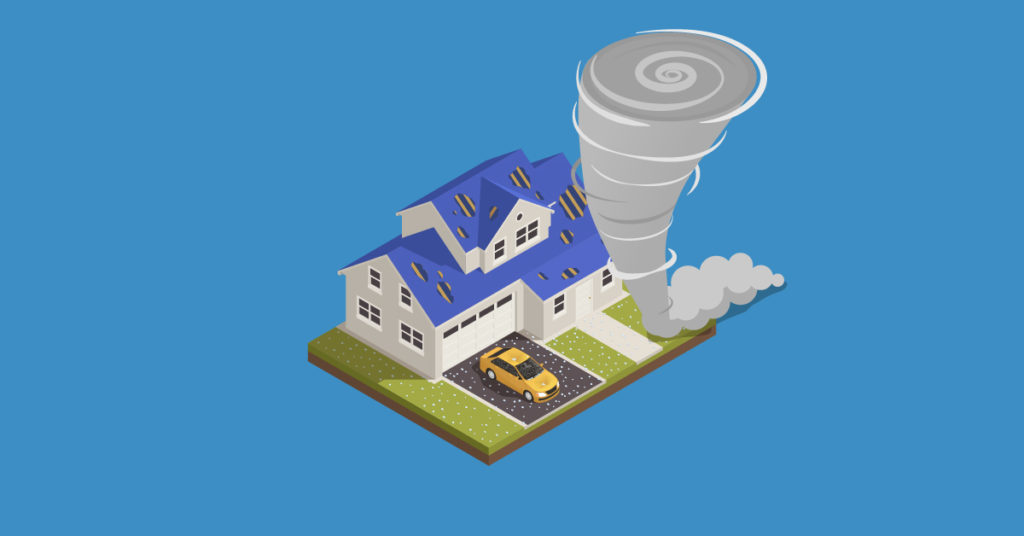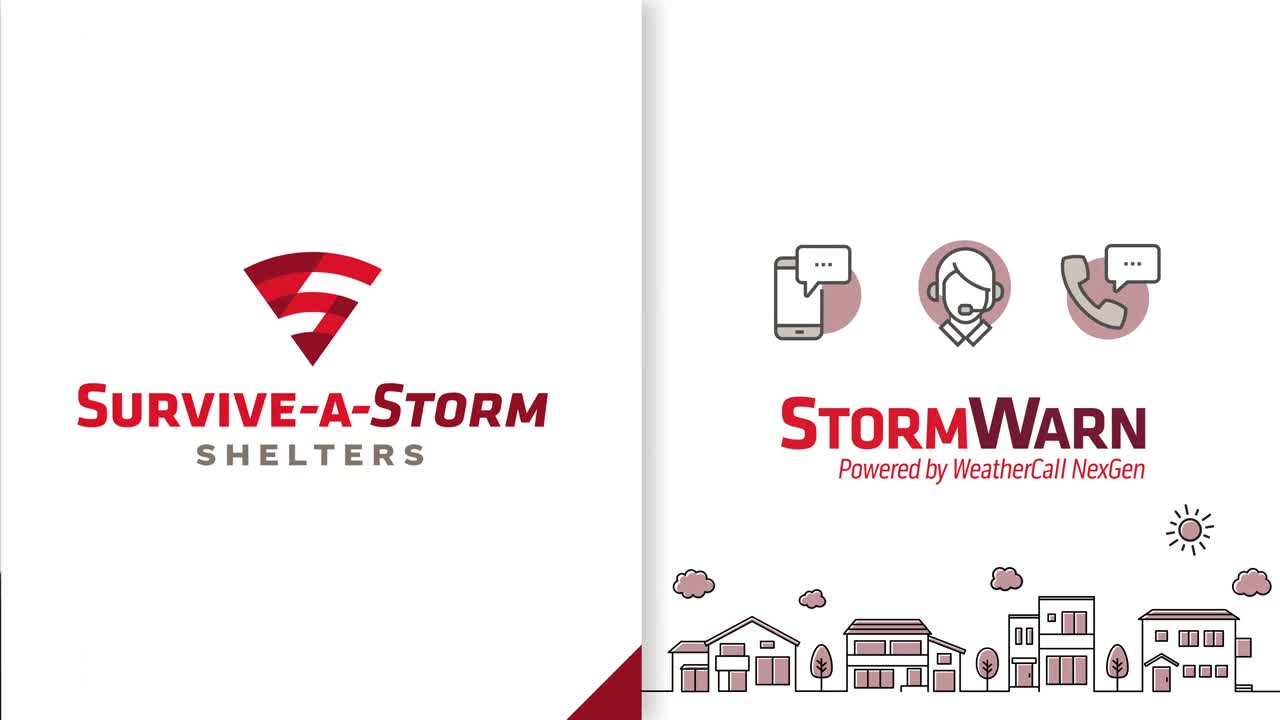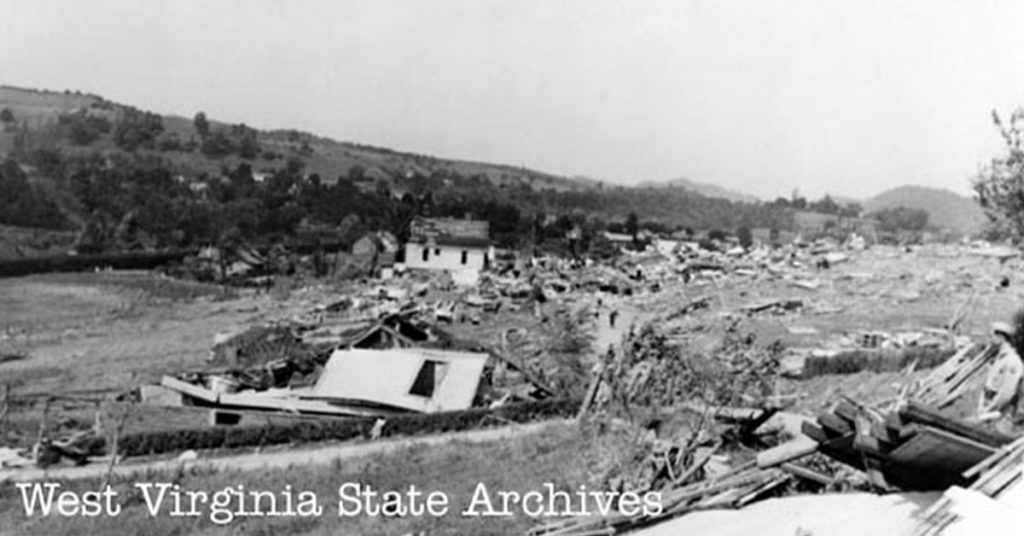Welcome to this comprehensive guide to tornadoes and storm shelters in West Virginia. Our beautiful state is home to majestic landscapes, rich history, and a resilient community. However, it's also occasionally visited by nature's powerful and unpredictable force - tornadoes. Although West Virginia's hilly terrain can often disrupt the formation of these weather phenomena, tornadoes have still played a significant role in our state's history. Over the years, they've shaped our approach to safety and disaster preparedness, leading us to develop robust systems and infrastructures like storm shelters. Here are some facts about tornado history in West Virginia:
- West Virginia has an average of 11 tornadoes per year, according to data from the National Oceanic and Atmospheric Administration (NOAA).
- The deadliest tornado in West Virginia history occurred on June 23, 1944, when a tornado struck the town of Shinnston, killing 103 people.
- Another significant tornado outbreak occurred on November 15, 1989, when a total of 11 tornadoes touched down in West Virginia, killing 8 people and causing extensive damage.
- Tornadoes have occurred every month of the year in West Virginia, but they are most common in the months of May through July.
- The strongest tornado ever recorded in West Virginia was an F4 tornado that struck the town of St. Albans on April 23, 1968, causing significant damage.
- The largest tornado outbreak in West Virginia history occurred on May 31, 1998, when a total of 14 tornadoes touched down in the state, causing significant damage but no fatalities.
- As of this writing, West Virginia's most recent significant tornado outbreak occurred on June 23, 2016, when a total of 23 tornadoes touched down in the state, causing widespread damage but no fatalities.
- West Virginia's most tornado-prone regions are the eastern panhandle and the southern part of the state.
- Tornadoes in West Virginia are often associated with thunderstorms and severe weather fronts that move through the region.
Preparing for Tornadoes in West Virginia
Tornadoes are a common natural disaster in West Virginia, with an average of 11 tornadoes occurring in the state each year. These powerful storms can cause significant damage to homes, businesses, and infrastructure, as well as posing a serious threat to human life. West Virginia residents should take tornado preparation seriously and have a plan in place for when severe weather strikes.
One of the most important aspects of tornado preparation is having a safe place to go during a tornado warning. This could be a basement or storm cellar, or an interior room on the lowest level of a building. It is important to have this location identified in advance and to practice moving to it quickly and safely with all family members. Additionally, it is important to have a plan for communication during a tornado, including a way to receive weather alerts and to stay in touch with family members and emergency responders. Location-based tornado alerts that tell you when it’s time to take shelter could be a handy part of your tornado preparedness plan.
Another key element of tornado preparation is ensuring that homes and buildings are fortified against tornado damage. This means securing loose objects and ridding your property of debris. Regular maintenance and inspection of structures can also help to identify and address potential vulnerabilities before severe weather strikes.

Tornado Shelters Near Me in West Virginia
To find public tornado shelters in West Virginia, you can start by contacting your county emergency management agency. They should be able to provide you with information about the locations of public tornado shelters in your area.
You can also check with local community centers, schools, and government buildings to see if they have designated tornado shelters that are open to the public during severe weather events. Some churches and other religious organizations may also have designated storm shelters.
Another resource for finding public tornado shelters is West Virginia Emergency Management Agency. This online tool allows you to search for shelters in your area by zip code, address, or city. Keep in mind that not all shelters listed on this system may be open to the public during severe weather events, so it's important to confirm availability and accessibility before relying on them as a safety option.
It's important to note that public tornado shelters should be considered as a last resort, as they may not be able to accommodate everyone in the event of a widespread severe weather event. It is recommended that individuals and families have their own safe location identified in advance and that they take steps to fortify their homes and prepare for severe weather events.

Know when severe weather is about to strike and when it's time for you to take shelter with our StormWarn texting program.


West Virginia Tornado Safety Tips
Tornadoes are a common natural disaster in West Virginia, and it is important for residents to be prepared and know how to stay safe during severe weather events. Here are some tornado safety tips for West Virginia:
- Stay informed: Stay up-to-date on weather forecasts and warnings from the National Weather Service or local news sources. This will give you time to prepare and take action before a tornado strikes.
- Have a plan: Identify a safe place to go during a tornado warning, such as a basement or storm cellar, and make sure all family members know where it is. Have a plan for communication during a tornado, including a way to receive weather alerts and to stay in touch with family members and emergency responders.
- Stay away from windows: If you are indoors during a tornado, stay away from windows and exterior walls. Go to an interior room on the lowest level of the building, such as a bathroom or closet.
- Cover your head: Protect your head and neck with a pillow, blanket, or other sturdy object if you are unable to get to a safe room during a tornado.
- Avoid mobile homes: Mobile homes and vehicles are not safe during tornadoes. If you are in a mobile home, evacuate immediately and seek shelter in a sturdy building or designated tornado shelter.
- Stay low: If you are caught outside during a tornado, seek shelter in a low-lying area, such as a ditch or culvert, and cover your head and neck with your hands.
- Protect yourself from flying debris: Flying debris is a common hazard during tornadoes. If possible, wear a helmet or other protective gear and cover yourself with a heavy blanket or jacket.
West Virginia Tornado Shelter FAQs
Question: What are the requirements for a safe tornado shelter in West Virginia?
Answer: Safe tornado shelters in West Virginia should meet specific construction standards to withstand high winds and flying debris. This often includes reinforced concrete or steel construction, a secure door system, and proper ventilation. Public, community or commercial tornado shelters must follow standards set by the Federal Emergency Management Agency. And the Americans with Disabilities Act, or ADA, requires most business and facilities to provide reasonable access and accommodation for all disabled customers, clients, and members of the public.
Question: How many tornado shelters are in each West Virginia county?
Answer: The number of tornado shelters can vary by county in West Virginia. For accurate information, you should check with your local emergency management office.
Question: Are there any free tornado shelters in West Virginia?
Answer: Yes, many communities in West Virginia provide public tornado shelters which are free to use in the event of a tornado warning. Check with your local government for locations. However, also be aware that not all communities have public tornado shelters.
Question: Are there any tornado shelters specifically for pets in West Virginia?
Answer: Policies about pets in tornado shelters can vary. Some shelters may accommodate pets, while others may not due to health and safety concerns. It's important to check with your local shelter in advance. When installing a residential tornado shelter, you can plan for accommodating your pets.
Question: How long can you stay in a tornado shelter in West Virginia?
Answer: The duration of stay in a tornado shelter depends on the severity and duration of the tornado event. Local officials will advise when it's safe to leave the shelter. Most people shelter from tornadoes for no more than a few hours.
Question: What should I bring with me to a tornado shelter in West Virginia?
Answer: When going to a tornado shelter, bring essential items such as water, non-perishable food, medications, personal hygiene items, important documents, a battery-powered radio, flashlights, extra batteries, and a first aid kit. If you have a residential tornado shelter, you can keep these items inside the shelter. If you will be sheltering outside of the home, pack them into a “go-bag” and keep it in an easily accessible place.
Question: Can I use my basement as a tornado shelter in West Virginia?
Answer: Basements can often provide a good level of protection from tornadoes, but not all basements are equally safe. It depends on the construction of your home and the specific conditions. Even with a basement, it’s a good idea to install a tornado shelter in it to provide the safety of a reinforced door and walls.
Question: How often are tornado shelters inspected in West Virginia?
Answer: The frequency of tornado shelter inspections can vary depending on local regulations. It's best to check with your local emergency management office for specific information.


